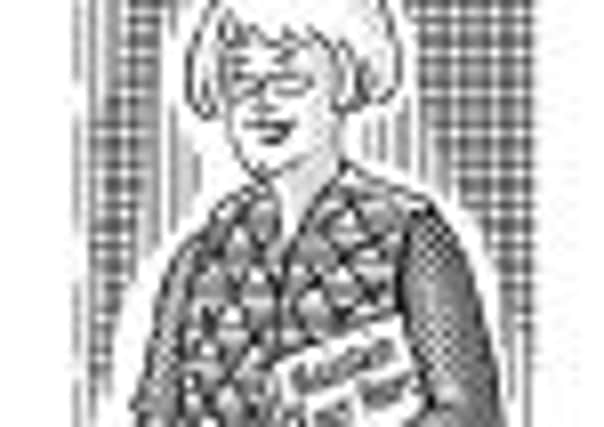Review: 44 Scotland Street - Streets ahead


Streets ahead
Published on Saturday 12 March 2005 00:07
44 Scotland Street
By Alexander McCall Smith
Polygon, 14.99
This handsomely produced volume, with admirable illustrations by Iain McIntosh and
a fine cover designed by James Hutcheson, gives us only the 109 episodes published
Advertisement
Hide AdAdvertisement
Hide Adlast year. The second of the series which finished in the newspaper yesterday will
appear in book form in the autumn.
This can’t be a conventional review if only because most people reading it will
probably have already enjoyed the novel in its serial form. So I can neglect what is
normally the reviewer’s first duty, which is to describe the book, say what it’s about.
Reading it in one go, rather than episodically, it’s impressive to find how coherent
it is, not at all straggly. The control is admirable, likewise the discrimination with
which McCall Smith shuffles his cast of characters, keeps different storylines going,
alternates comic with serious passages, employs the exaggeration that is the essence
of comedy without allowing it to topple into caricature.
Advertisement
Hide AdAdvertisement
Hide AdThat last remark requires some qualification. There are one or two passages which
didn’t seem to me to work when I read them in the newspaper, and work even less
well in the novel. The scene in which Domenica Macdonald, Angus Lordie and Pat
explore the Scotland Street tunnel and one running off it that brings them under
the New Club, where they overhear the annual general meeting of the Edinburgh
Establishment, is tiresomely whimsical. The idea is just strong enough for a
newspaper sketch, but out of place in what is a realistic novel.
For, allowing for the exaggeration of comedy, it is the realism of the novel that
Advertisement
Hide AdAdvertisement
Hide Adimpresses. Too often the word “realism” is given a restricted meaning, confined
to depictions of the grim, harsh, sordid, even brutal. But the real life of a great
many people is not like that. It is agreeable and pleasant. It has of course its
disappointments, moments of unhappiness and doubt, uncertainty about how to
behave, and so on. McCall Smith is to be applauded for his realisation that the
everyday life of the mostly contented middling sort of people, comfortably off and on
the whole well enough satisfied with their life, is every bit as much suitable matter for
fiction as the lives of the extravagantly rich or the miserably poor; for understanding
Advertisement
Hide AdAdvertisement
Hide Adthat a chartered surveyor may be more interesting than a drug addict.
44 Scotland Street is a very Edinburgh novel. Indeed Edinburgh is its true subject and
you might even say that the characters have been devised to illustrate this. McCall
Smith knows his Edinburgh thoroughly, and loves the city and its way of life. He
is not blind to the foibles of his characters and may even be a little less than fair
to a couple of them - he so dislikes pretentiousness and self-absorption that Irene
and Bruce are treated more harshly than perhaps they deserve, certainly denied the
indulgence extended to Domenica and Angus, both of whom exude in a different
Advertisement
Hide AdAdvertisement
Hide Admanner that peculiarly Edinburgh form of self-satisfaction and a consciousness of
their own virtue that doesn’t seem to me to have been earned. But in general McCall
Smith writes about his people with affection, and this is as rare in contemporary
literature as it is pleasing.
Nobody, least of all the author, would pretend that this is the complete Edinburgh. It
is not Ian Rankin’s, still less Irvine Welsh’s. But McCall Smith’s picture of the city is
every bit as true as theirs - and to many Scotsman readers it will certainly seem a lot
more recognisable.